
Background[edit | edit source]
3rd year at Western University for Electrical Engineering. Creative and Driven to pursue inventing devices related to Arduino, 3-D Printing, Circuit Design, and Wireless Communications. Takes part in a variety of engineering teams at Western, including the Aero Design, and Innovation and Entrepreneurship club.
Has experience working with my hands at Bell Technical Solutions as a fiber optic technician, as well as at home making VEX and Arduino Projects.
Is also apart of the FAST Research Group at Western University under the supervision of Dr. Joshua Pearce as a Arduino-based robotics system designer. My current project is that of a rope-winding robot, designed to output rope for the seaweed farming industry.
Interests[edit | edit source]
- Arduino | Wireless Communication
- VEX Robotics | 3D printing
- Robotics | Embedded Systems
- Sustainable Energy | Digital Audio
- Wireless Power Transmission
Successful Projects[edit | edit source]
Automated Stovetop Cooker[edit | edit source]
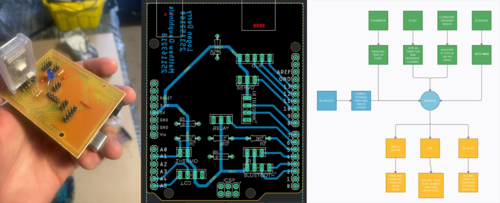
Using Arduino, created a robot that perfectly cooks a variety of food automatically after accepting user inputs. Using a variety of sensors, the device is able to detect the internal temperature of the food, and based on its relativity to the desired cooking temperature (as inputted through an app on your phone), the stovetop will either stay on, or turn off to stop the cooking process. A video of the robot can be seen here
In total there are 4 sensors: temperature, proximity, time, and infrared; and 4 actuators: a relay switch, Bluetooth chip, LCD display, and servo motor. Each sensor and actuator has its own use and contributes to the overall function of the device.
To create this device, I used a lot of outside code and tweaked it to make it work for my project. This project was my 2nd year design project; I was tasked with making a formal report that you can see here
Western Engineering Competition, 2021, Popsicle Stick Crossbow[edit | edit source]
File:WEC Crossbow video.mov I led a team of engineers to design and build a 'zombie-killing weapon' within a 6 hour timeline and present our project in front of a panel of judges. We were given a few constraints in terms of material and tools: only craft supplies such as popsicle sticks, hot glue, elastic bands, and absolutely no power tools. The resultant is a crossbow-like design dubbed: "definitely not a crossbow", as seen to the right. The main objectives for the weapon were to be as accurate, shoot as far, and have as much power as possible. The design won us the competition and allowed us to move on to the Ontario Engineering Competition.
.
.
.
.
.
VEX Robotics Balloon Battle, 2018[edit | edit source]
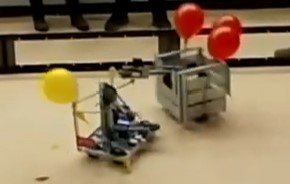
Created a VEX robot that has the ability to pop opponents' balloons while protecting its own. Our design was purposefully boxy to maximize its bulk and by proxy, protection ability (as seen from 6:21-7:21 of the video). As for the weapon, we wanted to make it as high as possible on the body to allow our design to reach over the majority of opponents to pop the balloons being held at the rear. The designs, and competition as a whole, were inspired by Battle Bot designs on the Discovery Channel.
.
.
Function Generator PCB[edit | edit source]
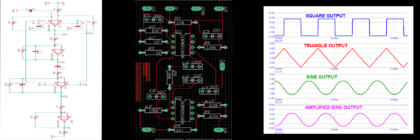
Made a Printed Circuit Board that utilizes three different circuit configurations: a multivibrator, integrator, and amplifier. Each configuration is made by connecting specific resistors, capacitors and op-amps together to alter the output voltages, with only a 9V battery as the sole input source.
.
.
Ontario Engineering Competition, 2021[edit | edit source]
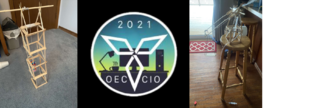
Was apart of a team tasked with designing a pair of lifts made of craft supplies. One lift was a tower that elevates a clump of erasers using a platform raised by a rotating drum and rope. The other was based on a crane and utilizes hydraulics to lift the crane arm.
.
.
PCB Soldering, Western Aero Design 2022[edit | edit source]
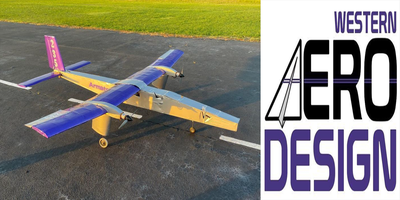
Soldered components onto the main aircraft PCB. This includes, but is not limited to: resistors, capacitors, inductors, pins, and LEDs. We also tried troubleshooting a group of buck converters that gave the wrong output voltage. In the end, we just wired the motors with a battery of the correct voltage instead of wasting time, trying to troubleshoot.
.
.
.
.
Current Projects[edit | edit source]
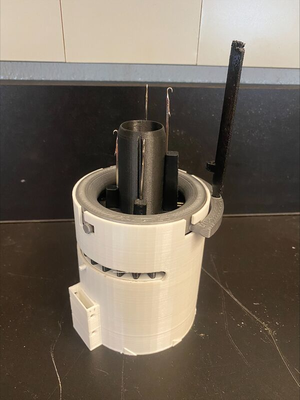
Automated Rope Making Device[edit | edit source]
Currently designing an open source Arduino-controlled robot designed to produce large volumes of rope quickly for use in the seaweed farming industry. The design will use a NEMA 17 Stepper motor controlled by an Arduino to drive the mechanism. All 3-D printed parts were designed and assembled by me.
Up and Coming Projects[edit | edit source]
*Subject to change at any moment as more ideas come**
- A Rope-Winding robot that accepts spools of rope fibers as an input and braids them to produce a rope.
- An alarm clock that launches a drone that has the turn off button to force people to wake up. Currently learning how to control a brushless motor using an ESC.
- A watch that displays captions to help people with hearing disabilities communicate effectively.
- A turbine powered car that uses wind energy to recharge its batteries, to extend travel distance.
- A speaker that emits a high pitch frequency, as well as music to ward off bugs.
My most spectacular failures (and best learning experiences)[edit | edit source]
- A wind turbine I attempted to create out of deck boards as a body and car alternator as a generator. (It got way too expensive and the wind wasn’t strong enough to turn the alternator)
- A speaker made from a duct pipe body and Bristol board cone. (The neodymium/14AWG coil electromagnet combo couldn’t vibrate the rigid cone).
- A solar powered heated glove that would make hands warm during the cold Canadian winters. (The parallel wire configuration drew too much current from the battery, making them heat up).
- A rail gun made from deck boards and a pair of steel L channels as the rails. (It got to be too expensive considering I would need huge capacitors to provide the voltage needed to move the projectile).